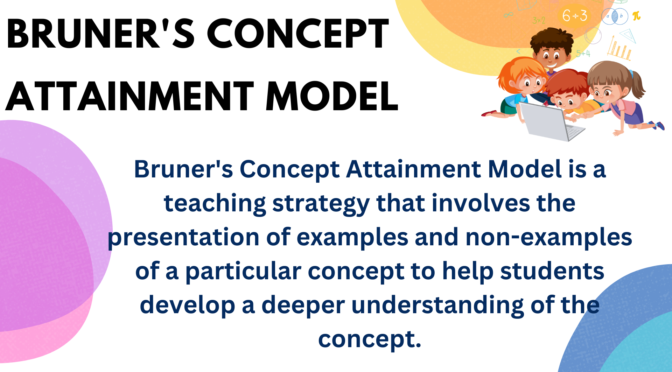Jerome Bruner’s Concept Attainment Model is a teaching strategy that emphasizes the importance of actively engaging students in the process of learning by using a deductive reasoning approach. The model is designed to help students develop critical thinking skills and the ability to make logical connections between ideas.
In the Concept Attainment Model, the teacher presents students with a set of examples, some of which are positive examples (examples of the concept being taught) and some of which are negative examples (examples of what the concept is not). The teacher then asks students to identify the common characteristics of the positive examples and to use deductive reasoning to identify the concept being taught.
About Concept Attainment Model
The students then work together to identify the characteristics that are common to the examples and use this information to generate a hypothesis about the concept being taught. This hypothesis is then tested by applying it to new examples and determining whether the examples fit the concept.
The Concept Attainment Model emphasizes the importance of active participation, critical thinking, and problem-solving skills in the learning process. It is often used to teach complex concepts in a variety of subject areas, including science, mathematics, and social studies. This model is effective in helping students develop a deeper understanding of the material they are learning and apply their knowledge.
Also Read : Mastery Learning Model
Features of Concept Attainment Model
The Concept Attainment Model involves several key steps:
- Identifying the concept: The teacher identifies the concept to be taught and selects a set of positive and negative examples to present to students.
- Presenting the examples: The teacher presents the examples to students, without initially telling them which examples are positive and which are negative.
- Identifying common characteristics: Students work in small groups or individually to identify the common characteristics of the positive examples and to eliminate the negative examples.
- Hypothesizing the concept: Students use deductive reasoning to hypothesize the concept being taught.
- Testing the hypothesis: Students test their hypothesis by applying it to new examples and evaluating whether the examples fit the concept being taught.


